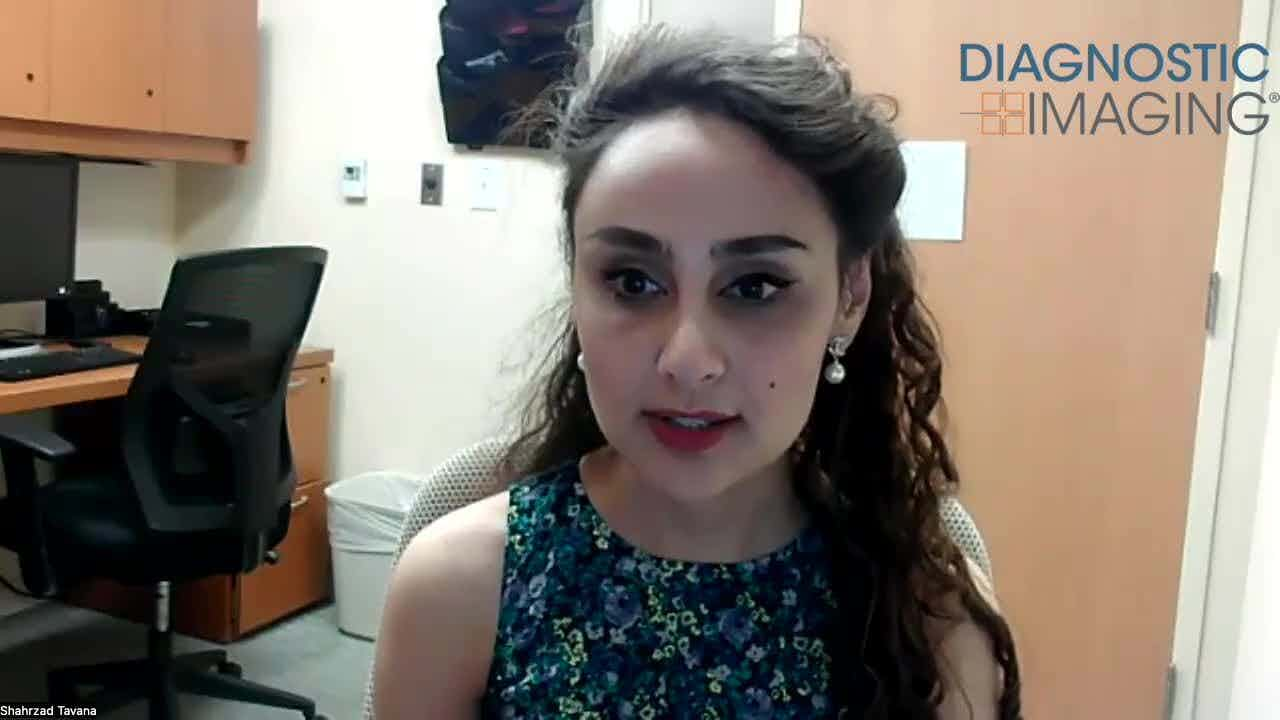For Pediatric Breast Pain -- Choose Reassurance, Not Imaging
Pediatric breast ultrasound use should be minimized for patients with breast pain but not a palpable mass.
Ultrasound should not be offered up for pediatric patients who experience breast pain without an accompanying palpable mass, new research indicates.
In a poster presentation during the Society of Breast Imaging/American College of Radiology 2021 Virtual Annual Meeting, Lauren K. Hinojosa, M.D., a diagnostic radiology resident at the University of Texas Southwestern Medical Center provided evidence that pointed to a minimized role for ultrasound.
For more Society of Breast Imaging conference coverage, click here.
“Pediatricians should be advised to offer reassurance rather than imaging in cases of breast pain without a palpable mass,” she said. “Pediatric breast pain should not contribute to a recommendation for biopsy following breast ultrasound.”
In a retrospective study, she examined radiology reports and medical records from 310 patients under age 18 – 271 females and 39 males – who underwent breast ultrasound for breast pain between Jan. 2, 1010, and Dec. 31, 2017. The average age was 13, and 41 percent reported right-sided pain, 39 percent presented with left-sided pain, and 19 percent had bilateral discomfort.
Most patients – 65 percent – reported focal pain, and the duration of pain varied. Roughly 23 percent had experienced pain for less than a week, 13 percent between one-to-three weeks, 21 percent between one-to-six months, and 6 percent reporting between one-to-three years.
Related Content: What to Know About Pediatric Breast Ultrasound
While 196 patients (63 percent) had a palpable mass, 146 cases (47 percent) showed no sonographic correlate to the symptoms. In addition, 146 cases had benign correlates with the most common being asymmetric breast bud and benign-appearing mass. However, 18 cases (6 percent) did have a sonographic mass that could not be categorized as benign, six of which went to biopsy which revealed benign pathology, she said.
Based on these results, Hinojosa said, ultrasound did not uncover any malignancy, and biopsies in the 2 percent of cases sent for further evaluation yielded the same results.
It is important to note, she said, that no formal guidelines for managing imaging findings on pediatric breast ultrasound exist, and BI-RADS classifications are likely to over-state malignancy risk in this population. Consequently, she reiterated the need for reassurance with patients over pursuing imaging.
For more coverage based on industry expert insights and research, subscribe to the Diagnostic Imaging e-Newsletter here.
Emerging AI Algorithm Shows Promise for Abbreviated Breast MRI in Multicenter Study
April 25th 2025An artificial intelligence algorithm for dynamic contrast-enhanced breast MRI offered a 93.9 percent AUC for breast cancer detection, and a 92.3 percent sensitivity in BI-RADS 3 cases, according to new research presented at the Society for Breast Imaging (SBI) conference.
The Reading Room: Racial and Ethnic Minorities, Cancer Screenings, and COVID-19
November 3rd 2020In this podcast episode, Dr. Shalom Kalnicki, from Montefiore and Albert Einstein College of Medicine, discusses the disparities minority patients face with cancer screenings and what can be done to increase access during the pandemic.
Can Abbreviated Breast MRI Have an Impact in Assessing Post-Neoadjuvant Chemotherapy Response?
April 24th 2025New research presented at the Society for Breast Imaging (SBI) conference suggests that abbreviated MRI is comparable to full MRI in assessing pathologic complete response to neoadjuvant chemotherapy for breast cancer.










